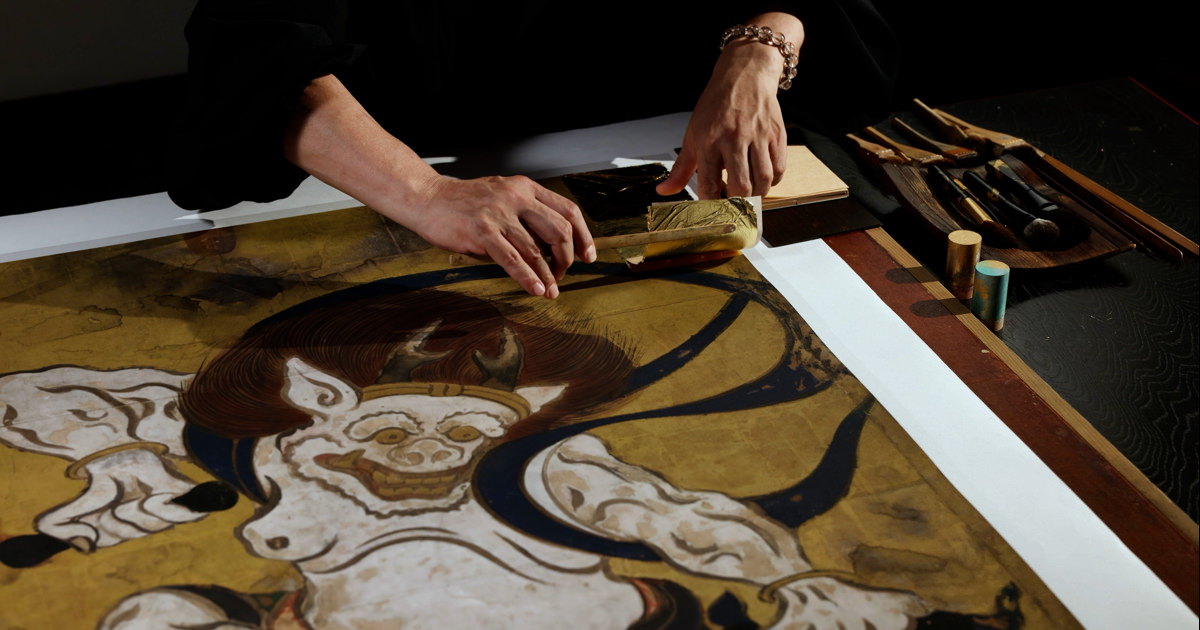These images are based on the high resolution facsimile produced by the Tsuzuri Project . Unauthorized copying, duplication, or transfer of these images is strictly prohibited.
Kujaku Myo'o (Mahamayuri)
High-resolution facsimiles
- Material
- printed,gold on silk
- Period of creation
- Tsuzuri Project Stage 14 2020–2021
- Recipient
- Tokyo National Museum(National Institutes for Cultural Heritage)
Original
- Cultural property designation
- National Treasure
- Historical era
- Heian(12th century)
- Material
- Color on silk
- Medium
- hanging scroll
- Size
- H147.9 × W98.9 cm
- Collection
- Tokyo National Museum
Description
A Buddhist deity on a peacock faces the viewer. This is the Wisdom King “Kujaku Myo‘o,” or Mahamayuri in Sanskrit, a deity with the power to ward off calamities. In Buddhism, Wisdom Kings used their wrath to guide people down the right path. However, this Wisdom King is depicted with a warm, sympathetic and merciful countenance. With its resplendent colors, this is said to be the greatest of all the extant paintings depicting this Wisdom King. Highlights and gradations of color are used to skillfully imbue the deity with a gentle, soft air. The gold accents are also remarkable. Gold was hammered into thin sheets to create the foil adhered to accessories like the necklace and bracelets, with cut gold leaf also used to create the patterns on the garments. The peacock feathers, lotus leaf veins, and other parts have been gently drawn using a gold pigment made from powdered gold mixed with a glue derived from animal bones or hides. This use of gold in varying textures has imbued the work with a rich yet graceful air. We hope you enjoy this glimpse into the elegant world of Heian-period Buddhist painting.
— Cited from Colbase



